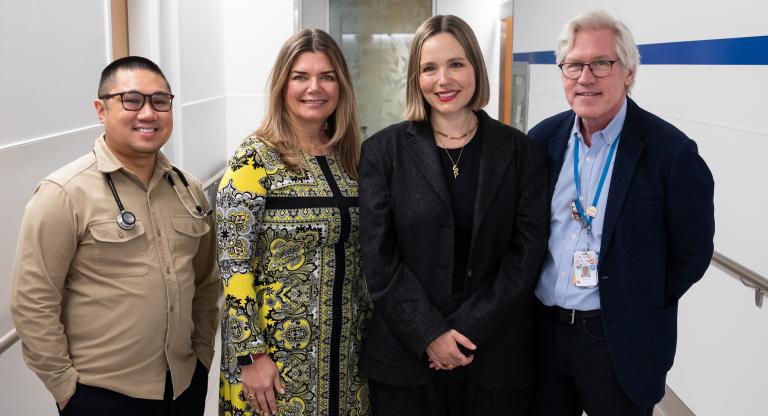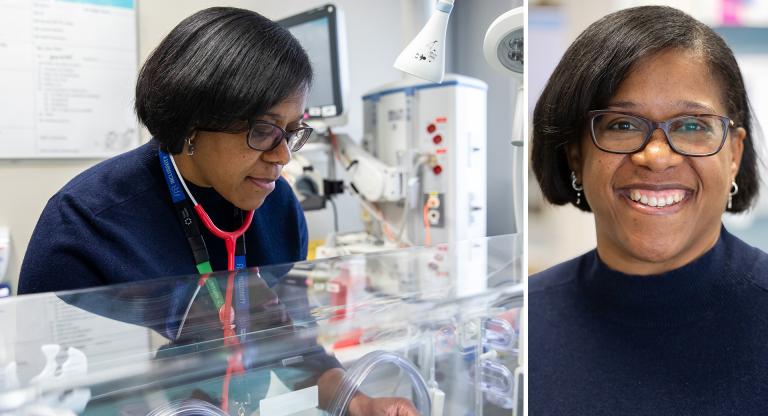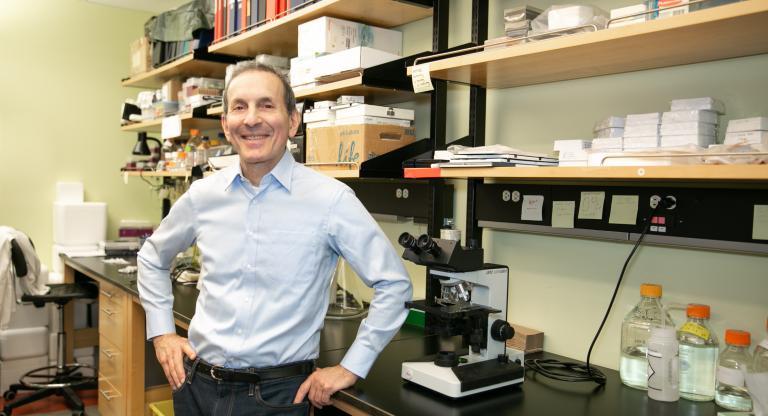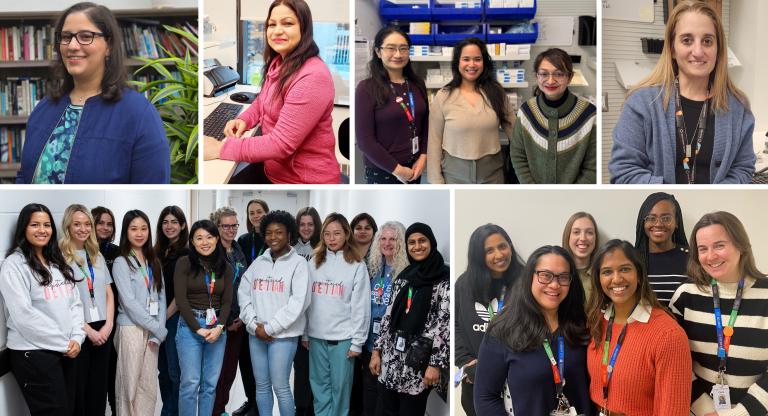How 3D printing for surgery is transforming care at Mount Sinai Hospital

When Eva Aimable-Kolosko first found out she would have to undergo major surgery to remove the tumour in her jaw, she was in complete denial.
It all started when she was eating and felt slight pain when she was chewing. A dental x-ray revealed she had a growth in her lower jaw about the size of a golf ball. She was later diagnosed with ameloblastoma: a rare benign tumor.
“I wanted to pretend it wasn’t really happening,” said Eva. As a mother of two young children and an executive for a loyalty company, she couldn’t picture putting her life on pause.
That was when she was referred to Division of Oral and Maxillofacial Surgery at Mount Sinai Hospital – part of Sinai Health — a team devoted to the diagnosis, surgical and adjunctive treatment of disorders, diseases, injuries and defects, involving the functional and aesthetic aspects of the hard and soft tissues of the oral and maxillofacial regions.”
After initially meeting with Dr. Karl Cuddy (Oral and Maxillofacial Surgeon) to discuss surgical management of her benign tumour, she was referred to Dr. Joel Davies for collaborative care with the goal of the surgeons working together to help treat her tumour.
Dr. Davies is a Head and Neck Reconstructive Surgeon at Mount Sinai in the Department of Otolaryngology – Head & Neck Surgery — a team devoted to the diagnosis and treatment of disorders and diseases of the ears, nose and throat. Eva was also referred to Dr. Ali Khadivi, an oral and maxillofacial prosthodontist working in the Department of Dentistry at Mt. Sinai hospital.
Eva’s surgery team performed a “jaw-in-a-day” surgery – with the help of in-house 3D printing. The technique allows for the removal of the tumour, grafting of the new bone into the jaw, reconstruction of the jaw and dental restoration—all at once.

“This is a game changer. 3D printing allows for accurate reconstruction and precision in surgery,” said Dr. Joel Davies. “By being able to visualize the final result beforehand, it allows us to do all the preparation in advance, allowing for better accuracy and patient outcomes.”
Using the 3D print-out of Eva’s jaw, the team knew exactly where and what angle the cuts needed to be made to remove the part of her jaw bone where the tumour was located, and were able to place a bone taken from Eva’s leg right into her jaw. It fit together like bricks of LEGO.
It’s a collaboration between the oral and maxillofacial, reconstructive microsurgery teams and the biomedical engineering team — specifically Qwynn Ferreira — who have spent countless hours perfecting real-life 3D models of patient’s jaws – what it looks like before with the tumour and what it should look like after its removal.
Dr. Karl Cuddy says by having this in-house technology, it allows the surgery team to do things in a less invasive way and saves on operating time.
“It’s unquestionable that the technology will help to improve recovery for patients, and to improve the predictability of the surgery. It lowers the chance of us needing to make revisions during surgery, and having to go back to reposition the reconstructed jaw."
Additionally, by having the new bone perfectly aligned in the jaw through 3D planning, it makes the dental reconstructive aspect of the surgery easier – ensuring the lower teeth and upper teeth come together nicely.
“Digitally guided implants indeed revolutionize dental procedures by leveraging advanced technology to ensure precise alignment and optimal healing. We can plan and execute implant placement with unparalleled accuracy, resulting in better long-term success,” said Dr. Ali Khadivi. This helped with the final dental reconstruction during Eva’s surgery.
The team leading this initiative aims to establish a comprehensive laboratory in the future, where every surgical procedure conducted by the Oral and Maxillofacial Surgeons and Otolaryngology Head and Neck Surgeons incorporates 3D printing technology, thereby enhancing both the surgical process and the overall patient experience.
As for Eva, what eased her mind was the dedicated team of health-care professionals who guided her through the process. And recovery has been going smoothly.
“When I told my friends and family I was getting surgery at Mount Sinai Hospital, everyone said, “you’re in good hands.’”
“And I definitely was.”












